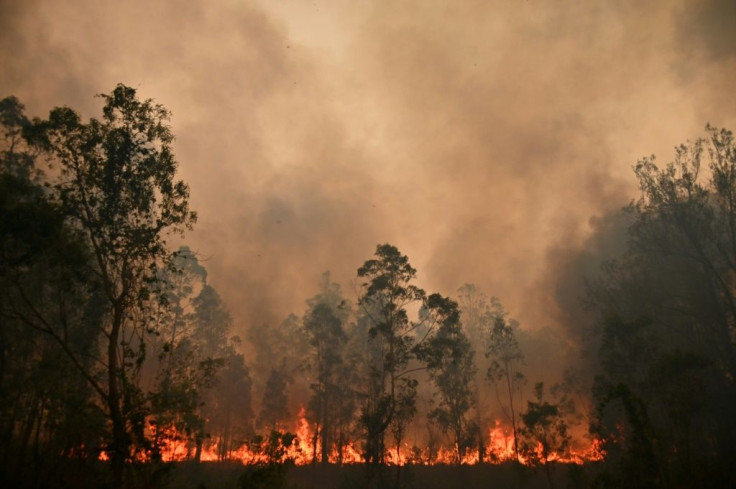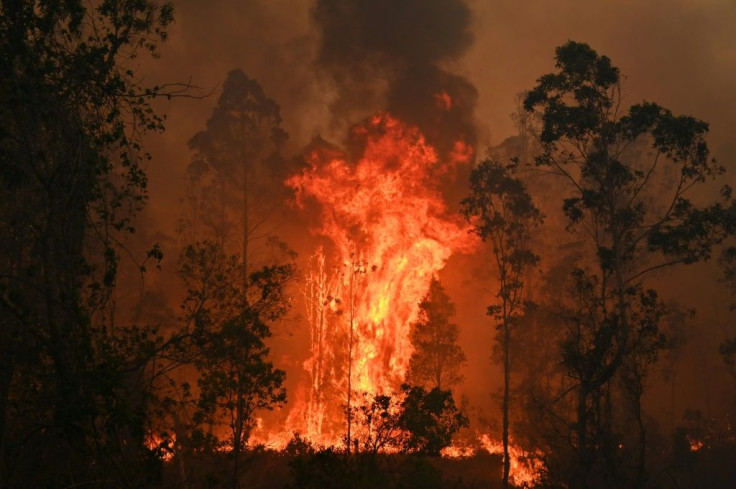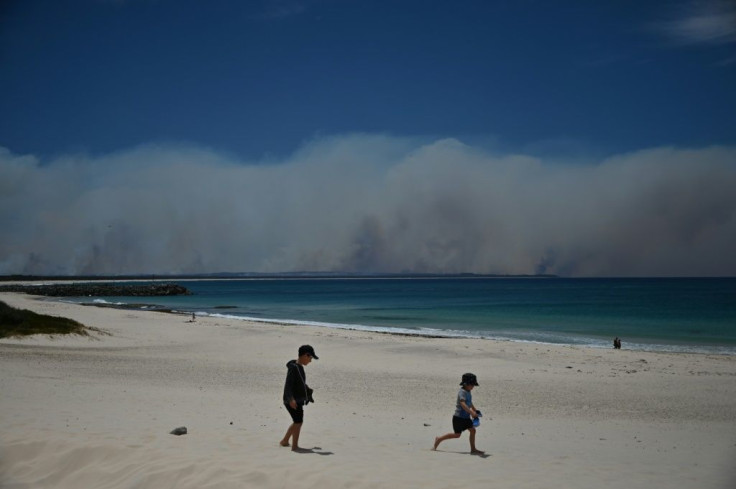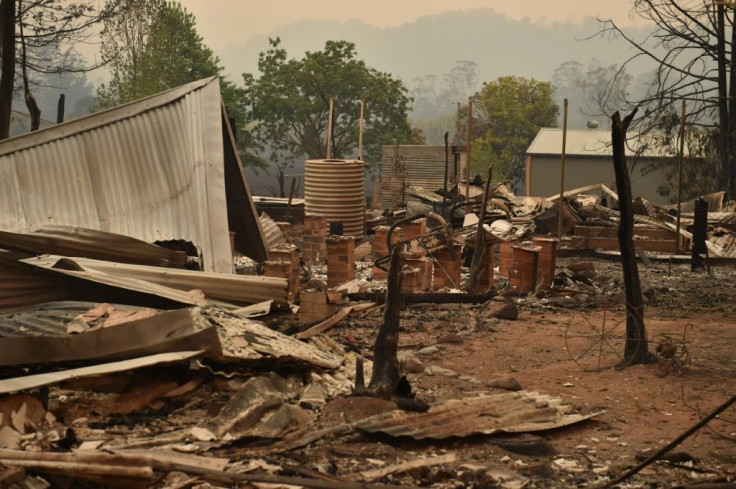Australians Warned Worst Bushfires May Be Yet To Come

Sydney is facing a "catastrophic" fire threat, authorities said on Sunday, as firefighters in eastern Australia raced to prepare for worsening conditions after ferocious bushfires devastated communities.
Fires have killed three people and razed more than 150 homes since Friday, but cooler weather overnight provided a welcome reprieve for firefighters and residents.
Authorities were assessing the damage on Sunday, with more than 100 fires still burning across New South Wales and Queensland, including several blazes that remained out of control.
Wider swathes of the states -- including greater Sydney -- are now bracing for perilous fire conditions predicted for the coming days, as is Western Australia state.
It is the first time Sydney has been warned of a "catastrophic" fire danger, the highest possible level, since the grading system was introduced in 2009.

Massive fires tore through several towns on Friday and Saturday.
The mayor of Glen Innes, where two people died, said residents were traumatised and still coming to terms with their losses.

"The fire was as high as 20 foot (six metres) and raging with 80 kilometres-an-hour (50 miles-an-hour) winds," Carol Sparks told national broadcaster ABC.
Five people reported missing have been found, but the unpredictable nature of the disaster means officials have not ruled out the possibility that others could still be missing, NSW Rural Fire Service spokesman Greg Allan told AFP.
In Old Bar, which was spared the worst when the wind changed direction, hectares of bushland had turned charcoal and small pockets of flames continued to smoulder.

Peter McKellar, 75, was clearing debris from his property as his neighbour's home sat in ruins.
"The firies (firefighters) saved ours," he told AFP. "They are doing a wonderful job. They're angels."

High temperatures, low humidity and strong winds forecast from the middle of the week are predicted to fuel blazes that authorities have warned they will be unable to contain ahead of time.
"We are ramping up for probably another 50 trucks full of crews to be deployed into New South Wales on Monday night ahead of conditions on Tuesday," NSW Rural Fire Service Commissioner Shan Fitzsimmons told reporters in Taree, one of the worst-hit areas.
"We have seen the gravity of the situation unfold... What we can expect is those sorts of conditions to prevail across a much broader geographic area as we head into Tuesday."

In Queensland, where a state of emergency has been declared, more than 1,200 firefighters were battling over 50 active fires on Sunday.
"Queensland does not usually have a fire season like we've experienced this year and last year," Premier Annastacia Palaszczuk told reporters.
With thousands of people forced to flee from their homes, Australia's government was offering immediate emergency assistance payments of up to Aus$1,000 (US$685) to those affected and extended financial support for anyone unable to work as a result.
Many residents are now returning to their scorched communities to assess the extent of the fire-inflicted damage, amid warnings it could take months for them to rebuild their lives.
Emotions were running high at an evacuation centre in Taree, with one man breaking down in tears as he was embraced by Prime Minister Scott Morrison.
"People are under a lot of pressure," Morrison told reporters. "The level of optimism, despite the circumstances, is quite inspiring."
Morrison, whose government has downplayed the threat of climate change, was also heckled about the issue at a fire command centre in nearby Wauchope.
"Climate change is real, can't you see," the Australian newspaper reported a man as yelling before he was escorted out of the building.
Bushfires are common in Australia but the country has experienced a dramatic start to what scientists predict will be a tough fire season -- with climate change and weather cycles contributing to the dangerous combination of strong winds, high temperatures and dry conditions.
But Ross Bradstock, from the Centre for Environmental Management of Bushfires at the University of Wollongong, described the situation as "unprecedented" for the affected regions, which have rarely -- if ever -- experienced such severe fires.
"Sadly, given the weather forecast for the coming week, the crisis may worsen and extend southward into landscapes primed to burn via extreme dryness," he said.
ddc-hr/qan
© Copyright AFP 2024. All rights reserved.





















